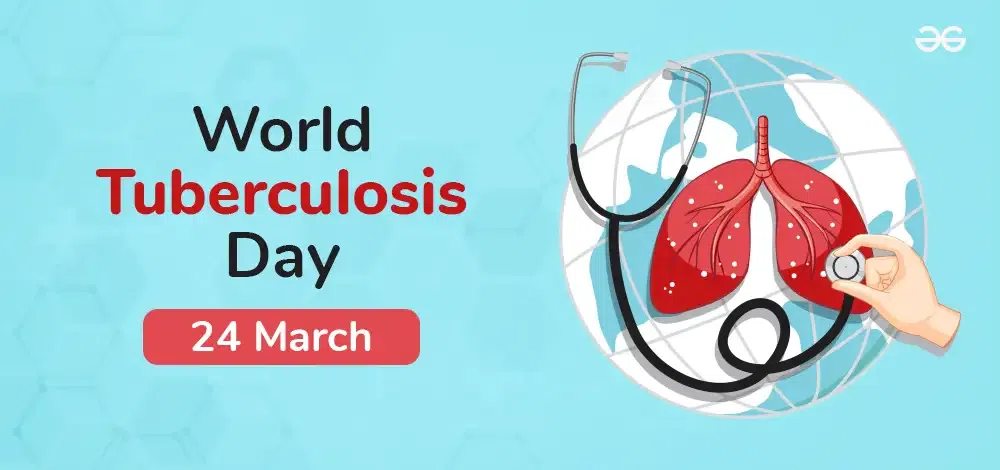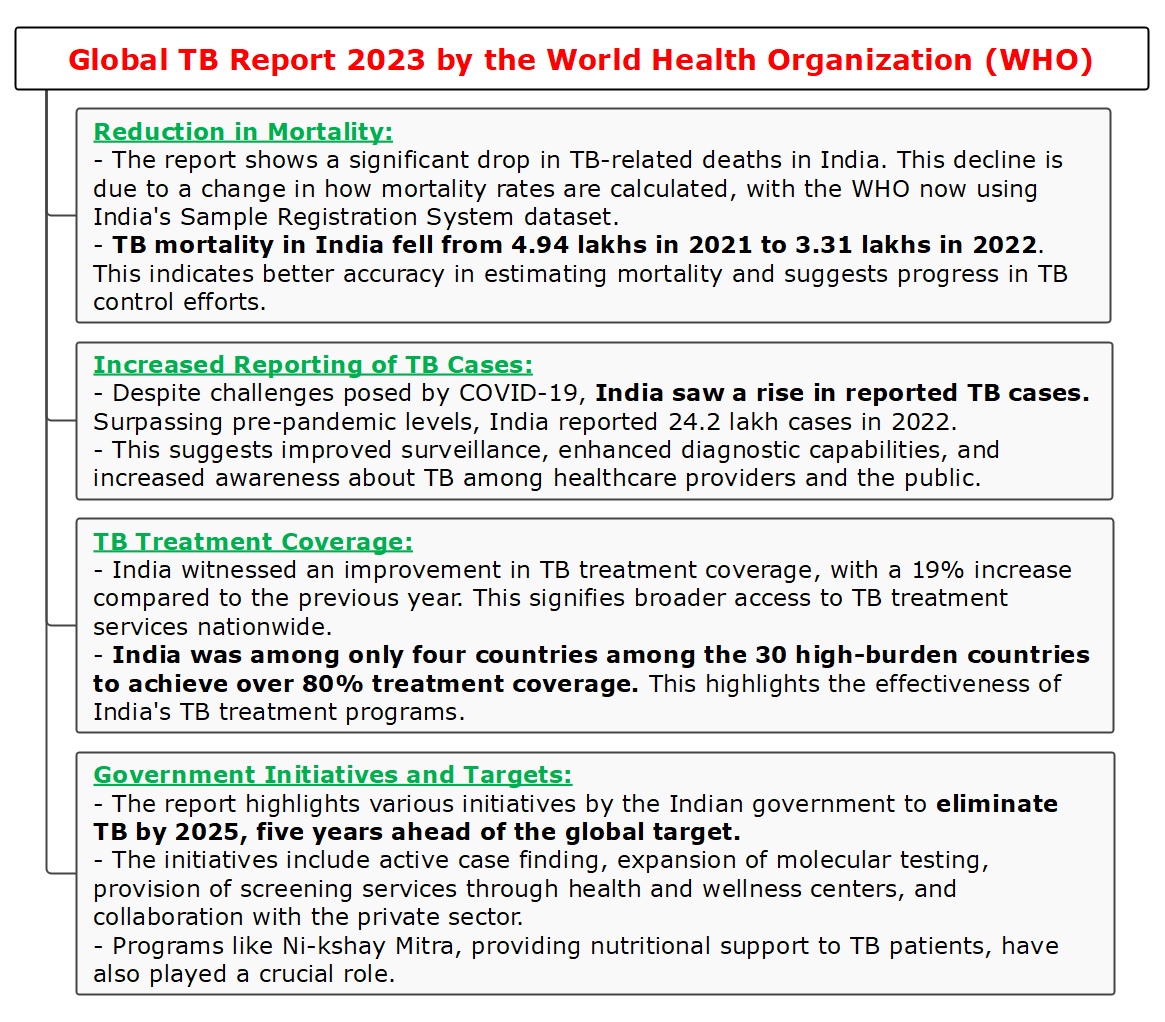Description

Copyright infringement not intended
Picture Courtesy: https://www.geeksforgeeks.org/world-tb-day/
Context: World Tuberculosis (TB) Day is celebrated every year on 24th March to promote awareness about tuberculosis, a deadly infectious disease that mainly affects the lungs.
World Tuberculosis Day 2024
- World Tuberculosis Day is marked every year on March 24, to increase awareness about tuberculosis and promote efforts to eliminate this deadly disease.
- It honours Dr. Robert Koch's discovery of the tuberculosis bacteria in 1882, an important discovery that created the path towards better disease understanding, detection, and treatment.
- The theme for World TB Day 2024 is "Yes! We Can End TB."
Tuberculosis
- Tuberculosis (TB) is an infectious disease caused by bacteria called Mycobacterium tuberculosis (MTB).
- It primarily affects the lungs, but it can spread through the bloodstream to other parts of the body, such as the brain, spine, kidneys, and even the bones.
- According to the WHO report, in 2022, an estimated 10.6 million people developed active TB, resulting in 1.3 million deaths, making it the second leading cause of death from an infectious disease after COVID-19.
- The disease disproportionately affects low- and middle-income countries, with Southeast Asia, Africa, and the Western Pacific regions having the highest burden.

Symptoms
- Active TB typically presents with a chronic cough that lasts for three or more weeks, sometimes bringing up blood-containing mucus. Other common symptoms include fever, night sweats, weight loss, fatigue, and loss of appetite.
- Symptoms can vary depending on the infected organ. For example, TB of the spine can cause back pain, and TB of the brain can cause headaches and confusion.
Transmission
- TB spreads from person to person through the air. When people with active TB in their lungs cough, sneeze, speak, or sing, they expel tiny droplets containing the TB bacteria. These droplets can linger in the air for hours and be inhaled by others. People with latent TB cannot spread the disease.
Diagnosis
- Diagnosing TB can involve a combination of tests, including chest X-rays, microscopic examination of sputum or other bodily fluids to detect the TB bacteria, and skin tests or blood tests to identify previous exposure to TB bacteria.
.jpg)
Prevention
- The Bacillus Calmette-Guérin (BCG) vaccine is an effective way to prevent TB, particularly in children. However, vaccination is not routinely recommended in all countries due to varying levels of TB prevalence.
- Early detection and treatment of active TB cases are crucial to prevent the spread of the disease. People at high risk for TB infection, such as household contacts of infected individuals, may also benefit from preventive medications.
- Public health measures to reduce overcrowding and improve ventilation in buildings can also help control the spread of TB.
Treatment
- Treatment for active TB typically involves a combination of several antibiotics taken for a long period, generally six to nine months.
- It is essential to complete the full course of treatment to eliminate the bacteria and prevent the development of drug-resistant TB strains.
- Drug resistance is a growing concern, and if someone contracts a drug-resistant form of TB, treatment becomes more complex and requires specialised antibiotics.

Must Read Articles:
TUBERCULOSIS: https://www.iasgyan.in/daily-current-affairs/tuberculosis
|
PRACTICE QUESTION
Q. What is the primary mode of transmission for tuberculosis?
A) Foodborne
B) Sexual contact
C) Airborne
D) Waterborne
Answer: C
|

















